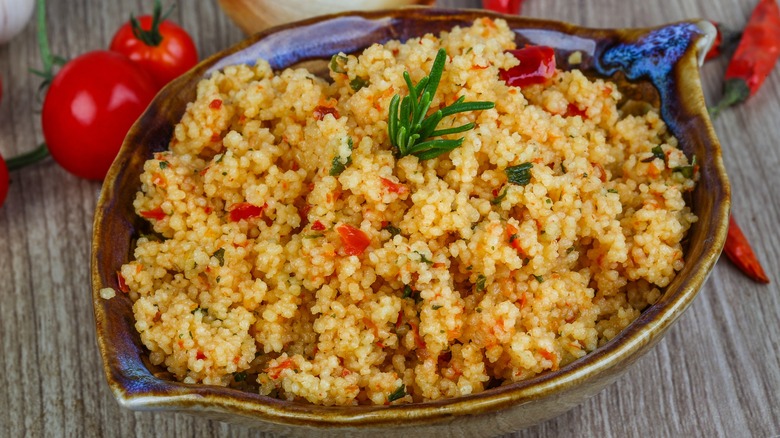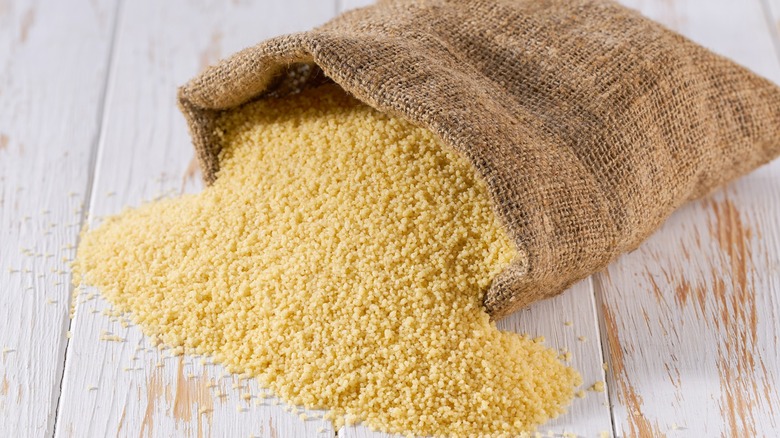Why Couscous Is Not Technically A Grain
We may receive a commission on purchases made from links.
Couscous has long been served as an alternative to rice or potatoes, partnered with meat and veggies on a plate. Because of its grainy texture and neutral flavor, as well as how it looks visually, it would be easy to mistake couscous for a whole grain like rice or quinoa. But sneaky couscous is actually a lot closer to processed pasta than it is to whole grains. It is made from semolina, a byproduct of durum wheat –- which is incidentally the traditional grain used to make pasta.
In the milling process, small round pieces of semolina are separated from the finer flour, and when mixed with water, they become couscous. There are different types of couscous, usually classified by the size of the pieces. Moroccan couscous is the smallest of the lot, and cooks the fastest due to its small size. Golden couscous is slightly bigger and often comes partially cooked. It has a nutty flavor and is served as a side dish with main meals, or as a breakfast cereal.
Israeli or pearl couscous is larger than its predecessors — each "grain" is about the size of a peppercorn. This kind of couscous comes in several variations, including whole wheat pearl couscous, which is light and fluffy and high in nutritional value, and red and green tri-color pearl couscous, which is often used as an aesthetically pleasing pasta replacement. There's also Lebanese couscous, which is by far the largest of the collection, coming in at the size of peas. Also called moghrabieh, this couscous takes the longest to cook and has a rich nutty flavor.
Couscous and pasta share similar nutritional profiles
Even the nutritional value of couscous is more similar to pasta than to grains. You could almost say that they are "cut from the same cloth" — which they technically are. Both pasta and couscous are high in carbohydrates, and have similar levels of calories, vitamins, minerals, potassium, fiber, protein and glycemic load (how quickly they raise blood sugar levels) per comparative portion, though couscous is less refined and is therefore slightly more nutritious than most pasta. Still, whole grains contain more fiber than pasta and couscous, making them more supportive of the digestive system.
And depending on the type of grain you are comparing, there are additional nutritional benefits to grains that make them healthier than couscous. Couscous is, however, cooked differently than pasta. While pasta is boiled until al dente or well done, couscous is prepared just by adding boiling water, covering and leaving for five minutes, then fluffing before serving. Also, spices and flavoring are generally added to pasta after it is cooked, while they are often added to couscous before the boiling water is poured over, so the couscous is infused with the flavors. Here are some delicious flavor combos and couscous recipes that you can try with your next batch of this tiny pasta.

